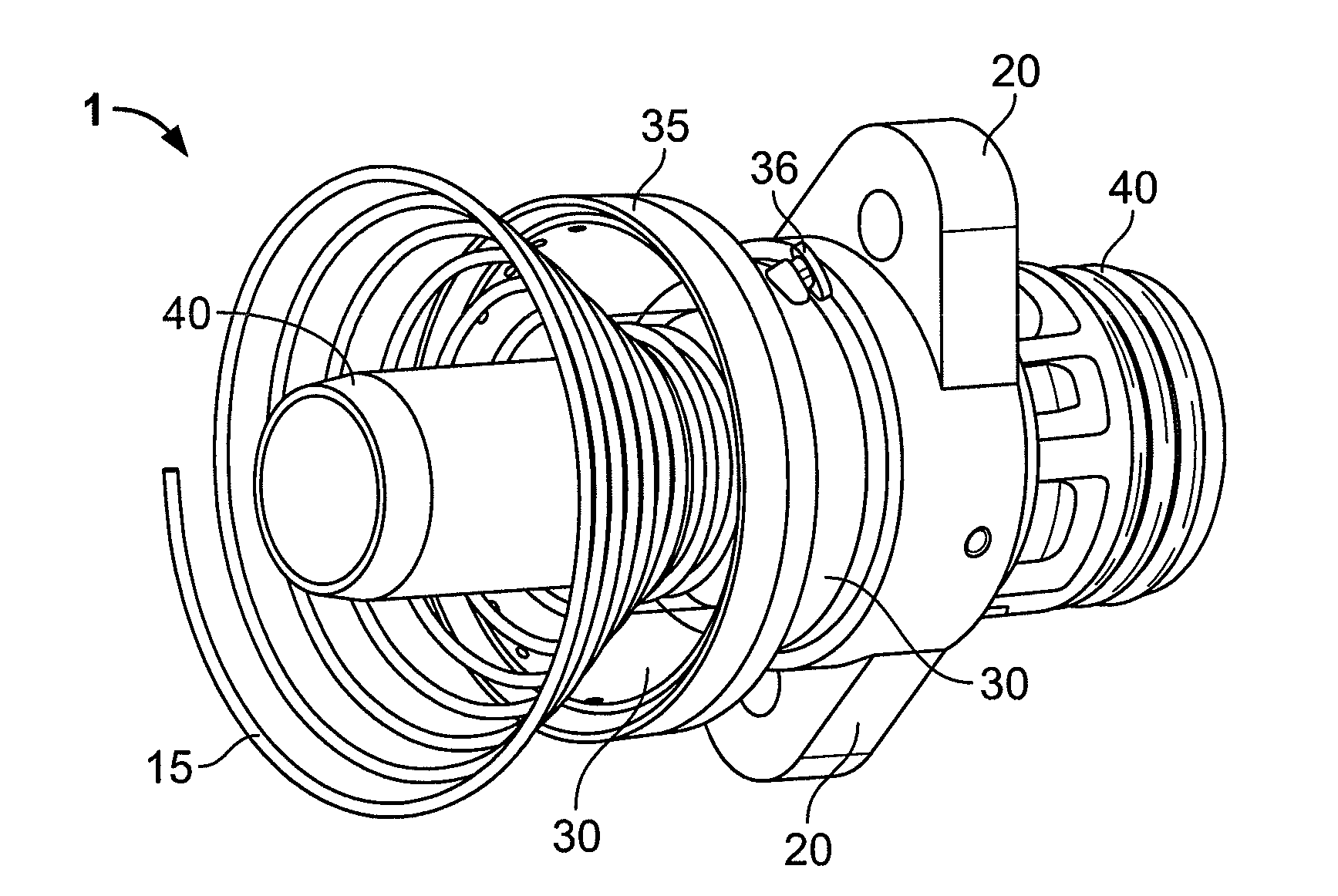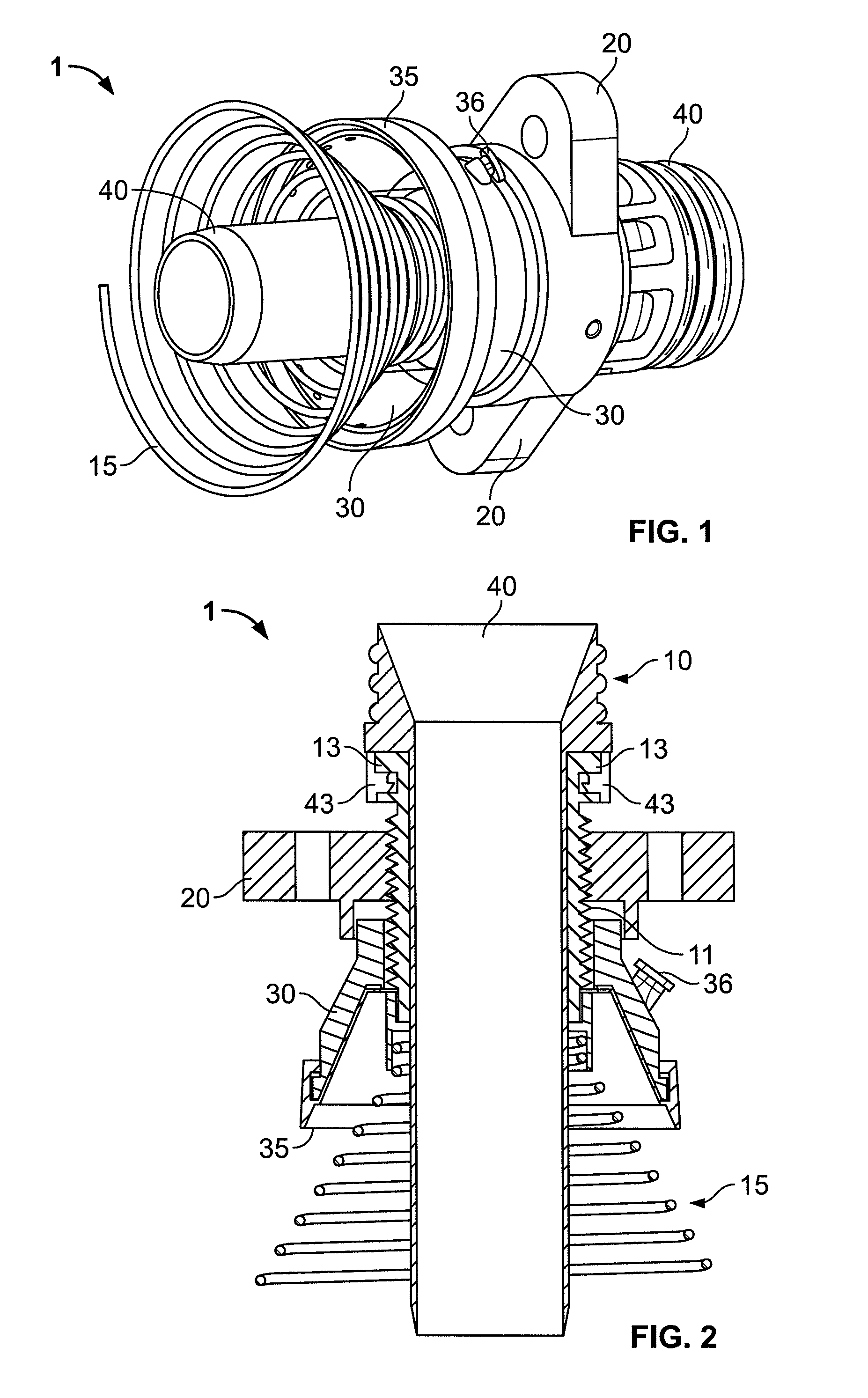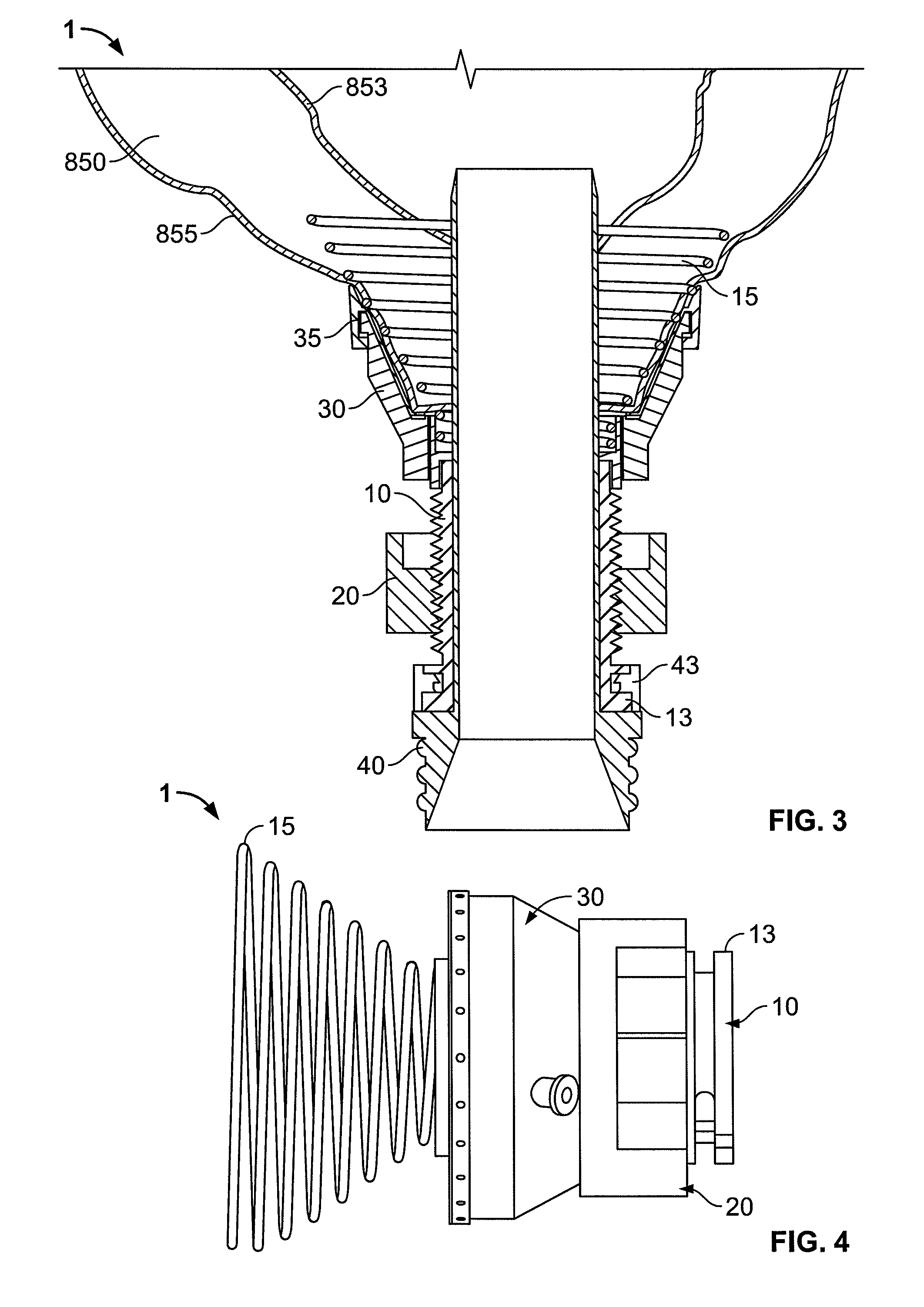Conduit device and system for implanting a conduit device in a tissue wall
a conduit device and tissue wall technology, applied in the direction of prosthesis, catheters, blood vessels, etc., can solve the problems of valve replacement, aac insertion operation, with or without cardiopulmonary bypass, not as straightforward, etc., to improve the ease and safety of conduit insertion, efficient removal and retrieval
- Summary
- Abstract
- Description
- Claims
- Application Information
AI Technical Summary
Benefits of technology
Problems solved by technology
Method used
Image
Examples
Embodiment Construction
[0031]The present inventions now will be described more fully hereinafter with reference to the accompanying drawings, in which some, but not all embodiments of the inventions are shown. Indeed, these inventions may be embodied in many different forms and should not be construed as limited to the embodiments set forth herein; rather, these embodiments are provided so that this disclosure will satisfy applicable legal requirements. Like numbers refer to like elements throughout. The singular forms “a,”“an,” and “the” include plural referents unless the context clearly dictates otherwise.
[0032]Although some embodiments of the invention described herein are directed to a conduit device 1 (see FIGS. 1 and 7, for example) and a system for implanting such a device to form an apicoaortic connector (AAC) between the cardiac apex and the aorta, it will be appreciated by one skilled in the art that the invention is not so limited. For example, aspects of the conduit device 1 and systems of th...
PUM
 Login to View More
Login to View More Abstract
Description
Claims
Application Information
 Login to View More
Login to View More - R&D
- Intellectual Property
- Life Sciences
- Materials
- Tech Scout
- Unparalleled Data Quality
- Higher Quality Content
- 60% Fewer Hallucinations
Browse by: Latest US Patents, China's latest patents, Technical Efficacy Thesaurus, Application Domain, Technology Topic, Popular Technical Reports.
© 2025 PatSnap. All rights reserved.Legal|Privacy policy|Modern Slavery Act Transparency Statement|Sitemap|About US| Contact US: help@patsnap.com



